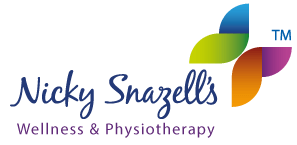The great news is that the UK is now beginning to exit the COVID pandemic and life is beginning to return to normal.
Understandably though, we still need to be cautious, and the authorities rightly require us to make sure we minimise risk for you and our staff. This means that if you have not already completed a COVID questionnaire with us, you will have to endure going through this on the phone and sometimes you won’t have time to do it.
We have thus created an online version of the form, which is attached, so that you can complete the form at a time which suits you better. If you are thinking of returning to us for treatment, and have not already completed the questionnaire, then by submitting this form beforehand, we will have plenty of time to resolve any issues that may occur. This means that when it comes time to book your appointment, it will be a fast and streamlined process, which will inevitably be a lot more convenient to you.
All you have to do is click on the button below, answer the questions and submit. If there are any issues that need discussing, we will get back to you by phone.
Last August we sent out a blog to let you know about a significant shift in policy by NICE, the organisation that approves treatments for the NHS, in which they stated:
“commonly used drugs for chronic primary pain have little or no evidence that they work and should not be prescribed. Instead, it recommended that people with chronic pain should be offered supervised exercise programmes, some types of psychological therapy, or acupuncture”.
Hidden within this statement was a second U turn on their attitude towards acupuncture, because at one time acupuncture was considered a gold standard by NICE for treating chronic lumbar pain, then they reversed this to the extent that acupuncture was put in the category of quackery. This new announcement has reversed opinion again as acupuncture is one of the recommended treatments for chronic pain.
NICE – We Ignored Them
Our clinic has world class therapists who have studied relentlessly to learn. Combine that with over 100 years of practical experience and you cannot ignore what you see with your own eyes, over and over and over again.
What we saw was that acupuncture worked.
So, when NICE did their first U turn, we ignored it (NICE has no jurisdiction over private clinics anyway) and carried on providing the very best treatment we could.
Our patients appreciated the help acupuncture gave them.
Opiate Crisis – It is Real and Prescribed
Now let us briefly focus on the Opiate crisis. Until COVID hit, the opiate crisis was the major health topic in the USA. In the USA, most drug addicts have been created by dependence on prescription drugs. Think about that for a minute. They prescribed their drug crisis.
Now this situation is nothing new and it has not gone away while COVID has engulfed the world. It has been known for years that the prescription of some drugs, such as opiates, were ineffective with chronic pain and yet have been overprescribed to the extent that it has caused an opiate dependency crisis.
In the USA, because of their growing demand for non-opiate solutions to chronic pain, Nicky was asked by 30 radio stations across the USA to speak and advise on other methods for treating chronic pain. In this she talked about the evidence of the inappropriateness of certain drugs on chronic pain and at the same time talked of the benefits and success she had seen when using acupuncture and even more so with dry needling.
Bear in mind this was 2 years before this problem was broadcast on the radio this week.
Dry Needling Is More Effective Than Acupuncture In Treating Chronic Pain
Lessons we have learnt from the above are that we need to be confident in our own skills and knowledge, and what we have seen with our own eyes. We should not be swayed by bureaucratic and perhaps political decisions where those do not match reality.
We should also recognise that due to constantly studying and practicing, we will always be way ahead of these types of announcements that evidently come out years down the track.
So, lets make a broad statement of our own.
Dry needling is far superior to acupuncture in treating chronic pain.
Let us justify this claim.
Nicky Snazell had a life experience as a child in which she saw the failure of western medicine to treat her mother’s many years of severe back pain. As a result, she made it a lifetime goal to constantly pursue treatments and approaches that gave better results.
She studied physiotherapy and acupuncture and provided both in her early years of treating but was frustrated by the results achieved with chronic pain. Then in the 1990’s she heard about a Professor Gunn, who had developed a western based needling technique, called Gunn IMS, which used an acupuncture needle but in a totally different way. Gunn used the needle as a microsurgical tool.
Nicky studied hard with many trips to Vancouver, where Professor Gunn was based, and reached not only the highest level, but was also awarded the first fellowship in the world by Professor Gunn. Simply put, other than Professor Gunn himself, there is no practitioner in the world more qualified than Nicky in Gunn IMS.
But what is more important is patient outcome and over more than 20 years, Nicky has consistently achieved significantly better results with Gunn IMS than with acupuncture.
In addition to Nicky’s observations and results, we now have Jon Hobbs as part of our team. Jon is Chairman of the AACP (Acupuncture Association of Chartered Physiotherapists) and one of the world’s leading acupuncture trainers.
Jon joined us primarily to learn Gunn IMS from Nicky, so that he can add this to his teaching portfolio. It is significant that Nicky is the only practitioner in the world that Jon allows to treat him. What better recognition is there for the merits of Gunn IMS?
What This Means For You
There have been no NICE announcements about Gunn IMS (or dry needling as it is more commonly known). Nor should we expect one for a good few years. Does this matter?
Well yes, in that many will only be swayed by national announcements. For those, maybe one day we will be able to provide more effective help.
But for those who want the best help with their chronic pain now and don’t want to wait for belated announcements, then Gunn IMS or dry needling, is available now and is well proven.
If you are suffering from chronic pain, call us now. We can help.
Call Now 01889 881488. Erica and Jean will be happy to help.
It is with great sadness that we announce the passing of Carol Bancroft, our holistic therapist who was well thought of by the team and many of our clients.
Carol worked at our clinic focussed on gentle to deep tissue massage and reflexology. She was part of the team up to lockdown on March 2020, but didn’t return to work after that due to understandable concerns over COVID.
Carol had previously lived and worked in New York for a number of years and was based at the World Trade Centre ‘Twin Towers’ and it was only a matter of luck that she wasn’t at work on 11th September 2001. Such a near death experience for herself, plus the loss of so many friends and colleagues must have had a devastating affect that would have been difficult to erase.
Carol was very interested in holistic therapies including sound therapy, crystals and drumming and was particularly fond of gardening. She loved nature and walking on Cannock, where we met her at times while we were out cycling.
Carol passed on 26th March after a short period of illness, having been discharged from hospital on 17th March, with a diagnosis of terminal cancer.
The team sends their sympathies to her family.

One of the best ways for you to find out who you can trust when you are searching for a new supplier or contractor, is to look at their Google reviews. Personal recommendation is tremendously valuable and could mean you saving a lot of time and money, but most of us don’t necessarily have someone to ask just when we need it. Google reviews, however, are available at any time and really are like a recommendation from a distant friend.
Leaving Google reviews is thus mutually beneficial to all and helps all of us to avoid those who need to be avoided.
Our clinic is thus no different to any other small business in the importance of having Google reviews and we are blessed with having reached 99 so far, of which nearly all are 5 star. For those of you who have already taken the time to leave a review, we are extremely grateful. We are also immensely proud of the consistently high rating you give us. It’s something we work hard on and never stop trying to improve.
The next review could be yours and it will always be that magical 100, a significant milestone. If you want to be that person, then now is the time to leave your review as it’s clearly not going to be available for long.
We will make sure that whoever it is will be personally recognised.
The majority of patients who come to my clinic and even those who I have personally treated, are totally confused about what GunnIMS is and also how it differs from acupuncture. The general assumption is that GunnIMS uses needles, so it must be acupuncture, right?
Wrong!
What is the Difference Between Acupuncture and GunnIMS?
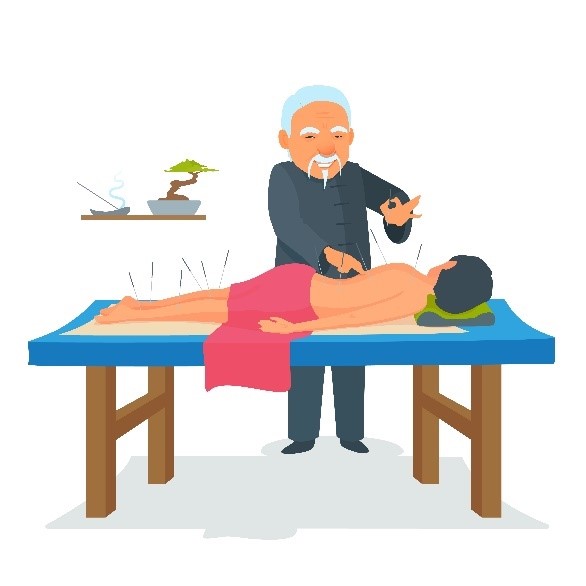
Acupuncture is an Eastern technique, originally developed between 5,000 and 10,000 years ago, without the benefits of modern anatomical knowledge we have today. Chinese Medicine is based on the assumption that energy, or Chi, flows around the body along defined meridian lines. The belief then is that by inserting needles into these meridian lines, it will affect the chi to bring the body back into balance. As a general rule the chi flows in fascia below the skin level, which is not too deep in the body. Typically needles would be inserted into the fascia and left in place for up to 30 minutes. Western acupuncture is a subset of Eastern acupuncture and follows similar principles.
It’s about as relevant as saying surgeons and cake makers both use knives
GunnIMS was developed much more recently, over the last 40 years, by Professor Gunn, a Vancouver based Doctor, using western knowledge of the anatomy and uses needles as a micro surgical tool, cutting deeply and directly into muscles which are not reacting properly to nerve signals and causing excess pressure on nerves, leading to long term, or chronic pain. It thus bears almost no resemblance to acupuncture other than the fact that both techniques use a needle. It’s about as relevant as saying surgeons and cake makers both use knives.
Who can benefit from GunnIMS?
Many people who have, or are suffering long term, unresolved spinal pain, can be helped much more by GunnIMS than any other technique currently available. In fact, GunnIMS is unsurpassed in the diagnosis and treatment of chronic muscular-related nerve (neuropathic) problems.
I’ll explain that with an analogy. Think of your car: if your headlight bulb keeps blowing because of a faulty wire in the fuse box, then you need to fix the fuse box, not keep replacing the headlight bulb. This seems obvious.
The way that human anatomy is formed in the womb means that the limbs can be considered an extension of the spine. So, specific parts of the body are controlled by specific nerves, their roots emerging at the spine. Just as in the car analogy, you could have pain in your foot because of a nerve problem in your back, or an elbow problem because of a nerve problem in the neck.
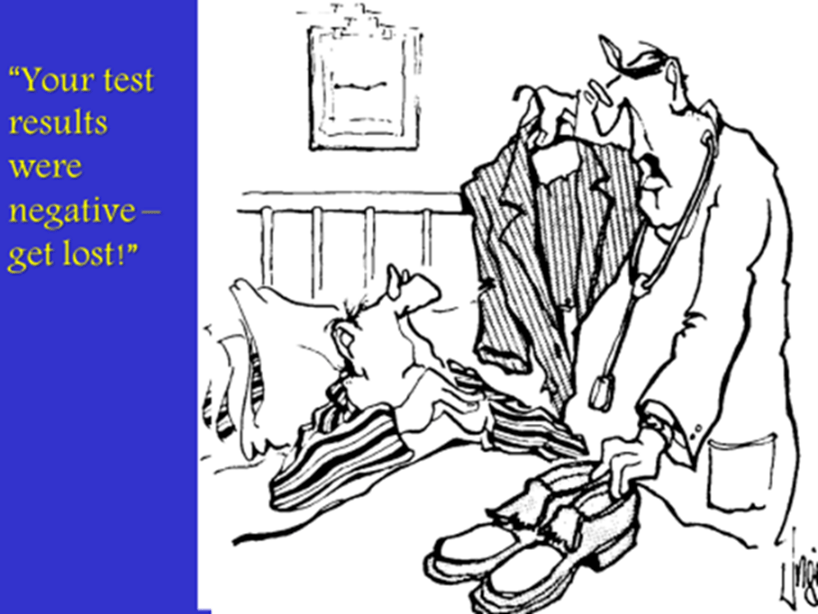
This is why people who suffer pain in the leg or foot get no relief from endless treatments on their leg or foot. Keep changing the light bulb and it won’t fix the problem.
To make matters worse, even our latest technology is unable to see pain caused by muscle spasm, so quite often patients who have suffered years of severe and constant pain, become depressed when they are told their scans are normal and thus nothing can be wrong.
This Is Simply Not True
It’s perhaps no surprise then that I’ve lost track of the number of times patients have arrived having suffered long term pain which they have been told was permanent and nothing could be done and just get on with it. Even worse, they have had many, many treatments on the symptom area, rather than the root cause of the problem in the spine.
Didn’t we just agree it was obvious to fix the fuse box? Clearly it’s not so obvious if you don’t have the right tool in the toolbox.
My Journey
As a child I grew up seeing my mother suffer years of horrific back pain and the best our western medicine could offer was pain killers, rest and exercises. Simply put, western medicine failed to kill her pain. I was driven to do something about it, but when I qualified as a Physiotherapist, I realised that this was still the same western medicine and I was no more able to help people with spinal pain than I had been as a child.
I’ve searched long and hard for a solution to severe and chronic spinal pain and now I have total belief that the results I can achieve with GunnIMS far exceed anything else that western medicine can offer. The results speak for themselves and that’s probably why patients travel thousands of miles for treatment which could eliminate the need for surgery and or prevent a lifelong dependency on toxic drugs.
GunnIMS In Sport
Chronic, complex sports injuries are often not resolved by conventional physiotherapy techniques. In part this is because many sports injuries have a neuropathic origin. GunnIMS works by treating the root cause of the problem.
Athletes have been shown to recover far more quickly from their injuries when GunnIMS has been used in their treatment, and some national teams and Olympic squads require GunnIMS practitioners to be part of their core therapy team.
Dry Needling
As a result of GunnIMS increasing in popularity, the term GunnIMS has largely been superseded by the more generic term Dry Needling. While I have no problem in using the term Dry Needling, I think it is always polite and proper to recognise that Professor Chan Gunn’s pioneering work is the basis of all dry needling today.
If you or someone you know is suffering from long term, severe and unresolved pain, then we can probably help, even when you have been told nothing can be done.
Call Now 01889 88144. Erica & Jean will be happy to help
Very few people are completely symmetrical and this can have an effect on the way they stand and move. They may also have additional problems including particularly high or low arches in the feet, different leg lengths or an injury. In some cases, people adapt to abnormalities without any problems; however, for others, the joints, ligaments, muscles and tendons are put under extra stress when they move, causing pain and accelerating the onset and severity of osteoarthritis.
Put together these problems can stop you being as active as you would like and even stop you from continuing with favourite pastimes.

When we stand, walk or run our body has to cope with and compensate for bad postural habits. It is these compensations that put structures such as muscles, joints, ligaments and tendons under undue strain when they begin functioning in an abnormal or compromised manner. Over time the structures become inflamed or injured.
Biomechanical Assessment
A biomechanical assessment is an investigation into the way you move. Although the focus is primarily lower body, the assessment will look at the whole body and assess how other parts of your body, for example your shoulders and neck, can also be affected and in pain.
A biomechanical assessment can be very beneficial if you are experiencing pain in your feet, lower limbs or back, particularly if no cause has been established. A biomechanical assessment is often very helpful in understanding and directing treatment at the cause of the problem.
The assessment process can take up to 60 minutes; you will need to wear shorts so that we can see your knees and legs as you move and it is helpful if you to bring a footwear so we can assess wear patterns. The examination is normally divided into two parts:
Part I. Static Assessment
A static assessment; which can consist of looking at inequalities or asymmetric conditions, various measurements might be taken while you stand up and possibly lie down. This part of the assessment will also include a computerised analysis of the pressure distribution under your feet (digital gait analysis).
Part II Dynamic Assessment
At Nicky Snazell’s we include a dynamic assessment as this is critical to develop an accurate analysis and it will highlight problems not evident from a static assessment alone. We will ask you to walk on a treadmill so we can analyse your gait, i.e., the way you move, how you swing your arms and even how you hold your head.
How Can We Help
Once we’ve identified the factors that are contributing to your pain, we can offer treatment and advice to counter these, including:
- Hands on Physiotherapy
- Exercises to improve strength, flexibility, balance and co-ordination
- Or, if required, orthotics, which are bespoke and made to measure insoles
Orthotics
Orthotic devices at the Nicky Snazell Clinic are made to measure by specialist technicians. They are professionally designed and bespoke to fit you, helping to provide stability and cushioning for your feet. These can help to:
- Improve the way you move day to day and thus help to take stress off injured areas of the body, for example;
- Plantar fasciitis
- Osteoarthritis of lower limb joints
- Achilles tendonitis / tendinopathies
- Hammer toes
- Bunions
- Backache
- Neck ache
- Metatarsalgia - Give support to your feet, avoiding overload to joints in the legs, feet and ankles
- Treat or adjust foot disorders, aligning the feet and lower limbs when you walk or run
- Help to equalise possible leg length discrepancies
- Relieve pain in your feet, legs, hips, back and your upper body.
- Can help to reduce the risk of further injuries
- Allow you to return to or continue participating in sport.
Orthotics are specifically designed for you. You need to give time for your body to adjust to your new posture and you should gradually increase the length of time wearing them. It’s perfectly normal for your leg muscles to ache for around a week after fitting. You should eventually use them in all your footwear.
If you are feeling discomfort when you are walking or running, then it may be that a biomechanical assessment would be appropriate. This is something we would need to determine during an initial session. We offer the biomechanical assessment for the price of a massage.
Call Now 01889 881488. Erica & Jean will be happy to help
It’s best to explain this with the help of an analogy. When you buy a brand-new car, it comes with a warranty. There’s a reason for this. The manufacturer is basically guaranteeing that provided you look after your car as specified, you are going to be very unlucky if anything goes wrong under the warranty period. Once past this honeymoon period, you know that you must carry out regular preventative maintenance at set intervals, in order to continue with many more miles of trouble-free motoring.

Eventually you will get to that time when things start to wear out and go wrong. Some parts will corrode, weaken and eventually fail. How fast your car gets to the junk yard depends very much on how well you looked after it and the difference can be many years.

Just as with a car, how many problems you will have and how long your body will last depends very much on how well it is maintained and that’s where we can help you. The thing is, with a car, when you send it to rust in peace, you can just buy another one. You can’t do that with your body.
Wellness – A Better Way
Nicky has devoted her life to finding better knowledge on how to help people get better results from their treatment and to live a longer, healthier life. In her books she developed the concept of a Human Garage and also the importance of overall health, or Wellness, which she defined in her 4 Keys model.
She has built a powerful team of highly experienced therapists and together they offer you the expertise of looking not only at the problems caused by a recent injury or of a longer-term chronic condition, but also look at your health keys to get even better long-term results.
Wellness encompasses all of you, your fuel (diet & nutrition), your servicing (exercise & fitness), how hard you press your right foot (stress) and your environment (lifestyle). The intent of Wellness is to achieve better long-term health for you.
If you feel you have Wellness factors that are negatively impacting your ability to heal, or you want to find out more about living a longer healthier life, then we can help.
If you are feeling excess rust and are in need of a bit of WD40 or maybe your suspension has collapsed, we can help.
Call Now 01889 881488. Erica & Jean will be happy to help
Osteoarthritis affects millions and is responsible for debilitating, non-stop pain. It can have huge negative impact on mobility and quality of life and is responsible for 95% of knee and hip replacement surgery.
If you are already suffering osteoarthritis pain and want treatment to reduce the pain and improve your mobility, or feel you need a diagnosis now and want to learn ways to reduce the impact of osteoarthritis, then read on.
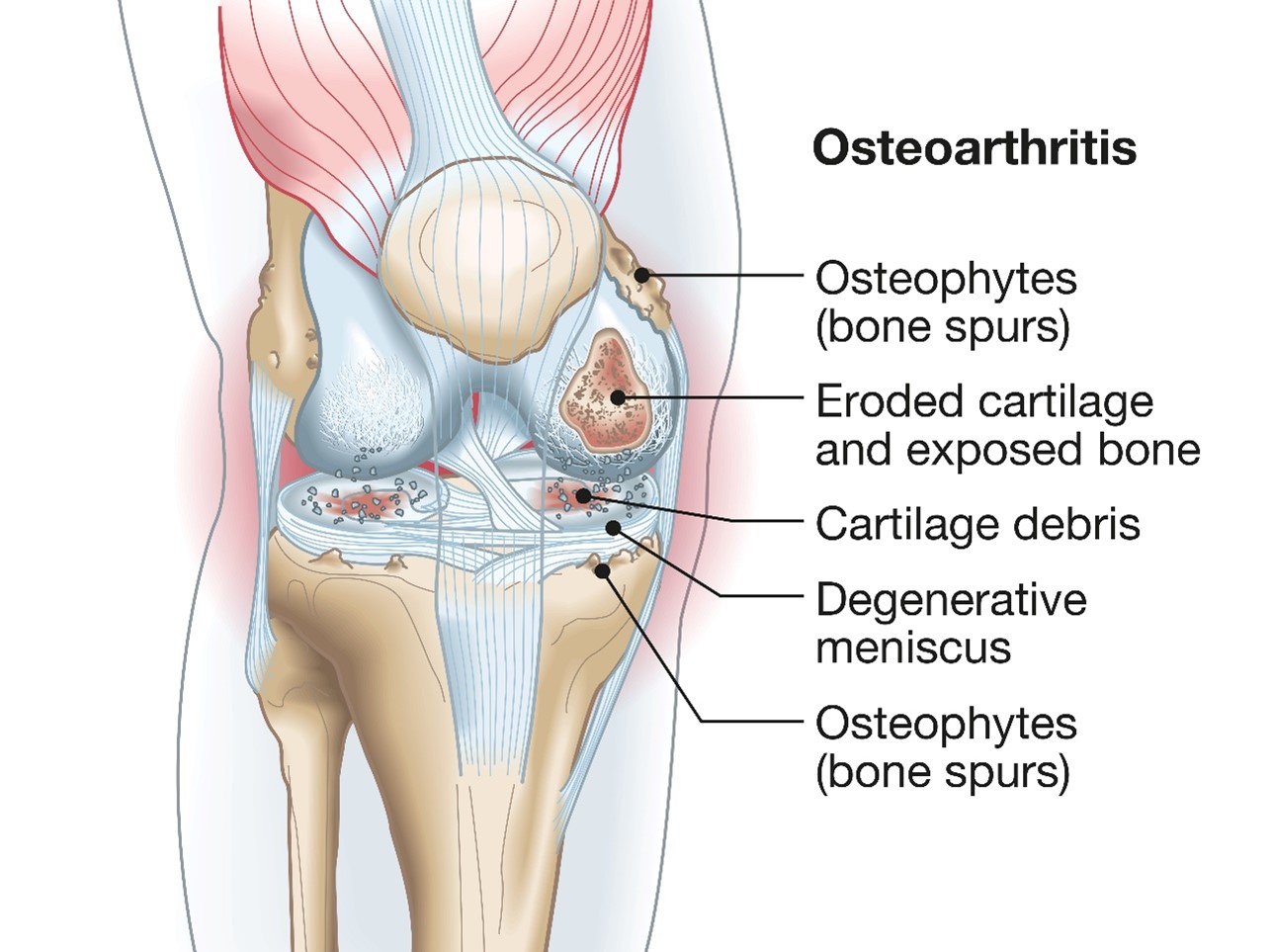
Osteoarthritis (OA), which the most common type of arthritis, is wear and tear in the smooth cartilage protecting the bones in joints. This eventually leads to bone erosion, bone spurs and unsightly bony end thickening. The joint juice (synovial fluid), swells and becomes inflamed and sticky. The attacked bone haemorrhages precious calcium. The result tends to be pain and stiffness, worsening as the severity increases.
Indicators of OA are painful joints and especially more pain and stiffness when you wake or start moving. By 50 years old 8 out of 10 of us have OA and by 60, 9 out of 10. Left untreated, OA can have a massive negative impact on your quality of life. Left untreated, it may need surgery. In fact, 95% of surgery on knees and hips is OA related. The amount of pain felt does not always match the amount of wear and tear
How Do You Find Out If You Have Osteoarthritis?
Provisional Diagnosis is by a taking a detailed history, your story and that of your close relatives, as OA so often runs in families. While this article is about OA, however, you may well have a combination of all sorts, for example, osteoporosis, rheumatoid and ligament strain. We explore how the severity of your muscle weakness, stiffness and joint pain affects your lifestyle. We ask you to partly undress and undergo functional movements to assess for joint range, flexibility, strength, pain and swelling and to allow the severity of the OA to be graded. Confirmation of the precise diagnosis and grading is only possible by adding X-ray or MRI scanning and bloods.
Could You Have Osteoarthritis Even Though You Don’t Hurt Much?
Perhaps surprisingly, the amount of pain felt does not always match the amount of wear and tear. Hence you need to be examined by experts. Cartilage itself has no pain receptors, so it can’t send a pain signal to the brain. Modern research also shows little correlation of wear and tear to pain severity. Hence pain alone cannot be used to determine the need for highly invasive joint surgery.
Pain signals are sent to a nociceptive part of the brain (the part which processes pain from tissue damage) and the pain starts shouting out, in a way that is a million times more distracting than your conscious thoughts. Moreover, after just 3 months the pain moves into the emotional centre and hardwires himself into your mood and previously innocuous lifestyle activities. What this means is that your brain memorises and associates the pain with an activity that should normally be enjoyable. The pain becomes chronic pain.
Can We Help You With Osteoarthritis and Chronic Pain?
The good news is mindfulness physiotherapy can massively reduce chronic pain. We advocate working towards optimum health with our 4 Keys approach. Nicky’s favourite treatment combination of modalities are:
- Wellness physiotherapy with a good exercise prescription and mindfulness
- dietary advice and supplementation
- acupuncture to give some immediate pain relief
- in less severe cases, shockwave for stiffness
If you are suffering long term pain and think it might be due to osteoarthritis, then it makes a lot of sense to call us to get you properly diagnosed and start treatment to reduce that pain and improve your mobility as quickly as possible.
CALL 01889 881488 NOW!
Jean, Erica or Charlotte will be happy to help.
Patients are often asking me if they are double jointed. (The medical term is hypermobile and is a condition where joints are allowed to move further than in a normal joint) Many have a vague idea that they may be hypermobile and wonder if it is, or could end up being, a serious disability.
Perhaps surprisingly, you can be very slightly or far too flexible, you can even be hypermobile, but not have hypermobility syndrome. I know that sounds confusing. Hypermobility syndrome is a condition that affects the joints, making them unusually flexible. Left untreated, it can mean you may struggle with day-to-day activities. Typical examples are frequently being more prone to strains and sprains. Hypermobility syndrome can also lead to back pain and achy joints.
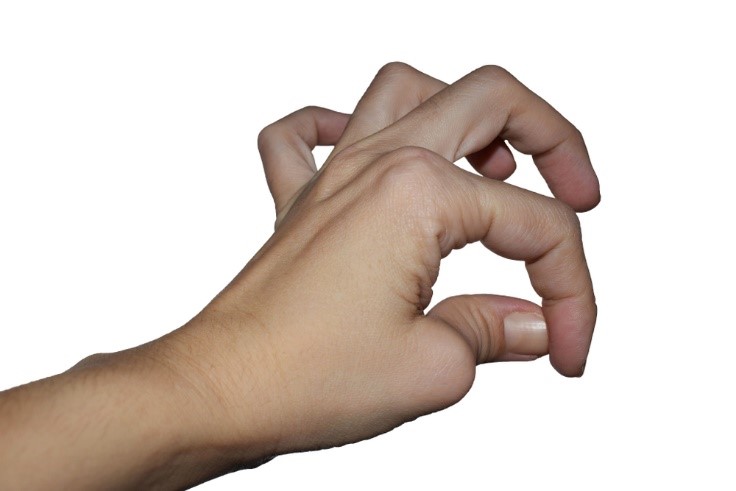
If you are worried you may be hypermobile, then we can test you for this condition at the clinic or you can see your GP, who uses a questionnaire called the Beighton score to establish if you are just flexible or have hypermobility syndrome. One of the key indicators is having four hypermobile joints with pain lasting more than three months. Your GP will also look at soft tissue damage and associated pain lasting more than three months.
Hypermobility runs in families so is often a hereditary problem. One of the main causes is thought to be genetically determined changes to a type of protein called collagen.
Physiotherapy treatment can help you manage this condition and help you avoid any unnecessary suffering.
If you would like to quickly score yourself:
- With your knees straight, can you reach the floor with your palms flat on the floor? If yes, one point.
- Can you take your elbows 10 degrees or more past straight? If yes, add one point for each elbow.
- Can you take your knees 10 degrees or more past straight? If yes, add one point for each knee.
- With your wrist bent at 90 degrees (palm towards inner forearm), can you push your thumbs back beyond 90 degrees? i.e., Thumb more towards forearm? If yes, one point for each thumb.
- Can you push your little fingers back beyond 90 degrees? If yes, one point for each hand.
Now add your score up out of 9. If your total is 5 or over, you are considered hypermobile and should make an appointment with us for treatment and advice.
Ehlers-Danlos Syndromes
Ehlers-Danlos Syndromes are a group of 13 classifications and are generally characterised by joint hypermobility. These syndromes are the most common form of connective tissue disorders, which can affect the skin and practically all major systems and organs.
If you are concerned that you may be double jointed, give us a call – we can help
Call Now 01889 881488. Erica & Jean will be happy to help
Junk Food? Only If You Want To Feed Your Pain
Most of us eat too much of the food that enhances pain, and too little of the food that reduces pain. Our cells depend on food and water for creating energy, healing and cleansing, but because of the poor food we eat, much of which is highly processed and loaded with additives, we have persistent inflammation, contributing to musculoskeletal pain, arthritis, diabetes, heart attacks, strokes, cancer… you name it.

Refined grains, omega 6 fats, too much sugar, and too much dairy – especially milk – all stress the system. Pain caused by too much inflammation damages nerves beyond any injury, and also causes tissue pain in the tendons, ligaments, and joints.
Our ancestors were hunters and gatherers, where the soil was rich in nutrients and had not yet been made toxic with chemicals. They ate fresh meat, berries, roots (therefore, a lot of healthy omega 3 oils), plus fruit and vegetables high in antioxidants. They had no processed foods, no wheat, no trans fats, no excess sugar, no omega 6 and no processed dairy. This healthy diet helped to control chronic inflammation, something which plagues our modern day western lifestyle.
To be healthy, we need healthy food and because we are not getting enough, we make too much fibrin, causing too much scar tissue in our tendons, skin, and joints. This then causes arthritis, fibromyalgia, artery narrowing, and poor healing all round.
All this unhealthy, sugary food is prone to cause us to over eat and this in turn means we get too heavy for our height.

Fatter, faster than any other country
We are becoming increasingly obese and so are our children. We are a fat nation, growing fatter, faster than any country in the world, and because of this, we find ourselves in a major health crisis. It’s normal to want our children to do better than us, but sadly letting our children get fat is doing quite the opposite.
The next generation is not going to live as long as us
It’s not just food which affects the quality of our lives. There are other factors like stress, mindset, lifestyle and exercise and we can help you with all of these. Diet, however, is in your control. Even if you eat a little of the healthier foods, pulling some fresh vegetables out of your garden from well fertilised soil, it is a small start.
By looking beyond the short term gain of the lack of effort in preparing junk food, and instead focus on the long term gains of preparing and eating healthy food, you will be taking an important step to a less painful, less obese and longer life. Not only that, you get the added benefit of a much broader world of gastronomic delights.
If doing this for yourself doesn’t give you enough motivation, at least do it for your children, so they at least may have the chance to live as long as you and have a much better quality of life.
If you need some help with your current health, then call us.
Call Now 01889 881488. Erica & Jean will be happy to help
